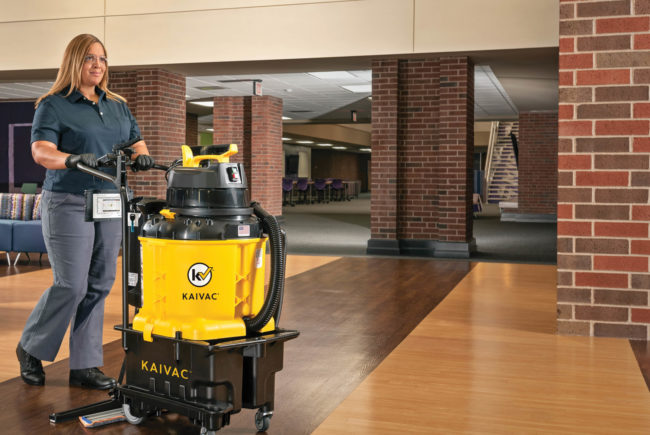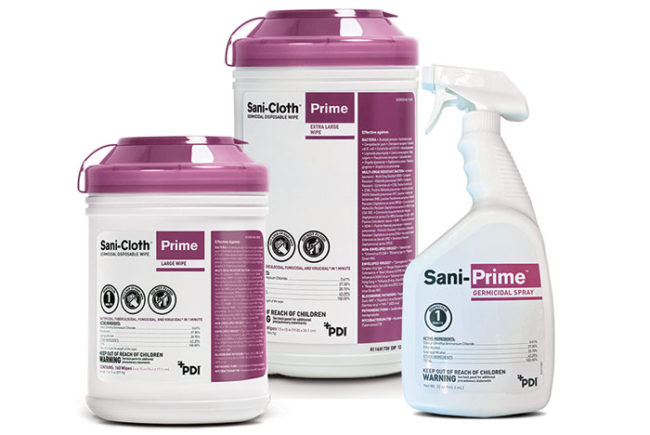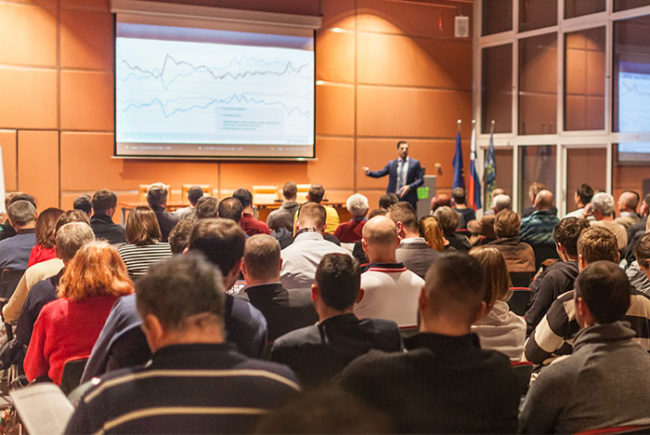
The COVID-19 pandemic turned our world upside down. It changed the way we shop, socialize and view our personal responsibilities for our health and wellness. Most of all though, it changed the way we viewed cleanliness. Suddenly, the standards we had in place weren’t good enough.
These new parameters of cleanliness have touched every industry, but perhaps where it’s felt the deepest is in health care. Public health was thrust into the limelight, scrutinized, reshaped and fortified amidst continually rising standards of cleanliness and sanitation. In response, the cleaning industry experienced fundamental shifts that continue even as we move forward.
The public’s increased expectations of cleanliness are higher than they’ve ever been, and they continue to rise. According to Deloitte Digital in a 2020 report, a whopping 85% of consumers agree that visibly clean facilities are critically important. While this attitude has been steadily growing over the last two decades, it has experienced exponential growth over the last two years.
Today, even more transformational, collective awareness of public health risks in everyday spaces is surging. An Ernst & Young survey found that seven in 10 people say they’re more aware of hygiene and sanitation in businesses, while McKinsey reported that one in four people now say that cleaning and sanitation is the top factor in determining which businesses they visit. These perceptions and principles are compounded when these people enter a health care facility.
Nearly every person entering a facility carries a smartphone, and all it takes is one patient or family member to walk into a clinic or hospital and a single cleanliness incident can be captured in photos or video and instantly shared on social media or online reviews, causing immense damage to an organization. Nine in 10 consumers say they will not even consider patronizing a business with negative reviews about its cleanliness, according to Deloitte Digital.
The consumer culture is not the only force driving change though. Employers in all industries are becoming more aware of the profound link between a clean healthy work environment and employee satisfaction, retention and productivity.
It is also important to consider the regulatory requirements that continue to make a significant impact on how cleaning staff work. In order to remain compliant with rules from agencies like the Occupational Safety and Health Administration (OSHA) and meet certain criteria from regulatory rating organizations like Leadership in Energy and Environmental Design (LEED), cleaning crews need to focus on using technologies, products and processes that meet the established health and safety standards.
The responsibility to meet these ever-rising demands falls squarely on the cleaning operations team, tasked with creating confidence-inspiring cleanliness to help people feel safe as they enter clinics, doctor’s offices and hospitals. More specifically, these pressures are pushing a paradigm shift in the cleaning world: cleaning operations need to focus not only on higher standards of cleaning for appearance, but now also on the more complex challenges of cleaning to create and protect healthier, safer environments.
A growing number of forward-thinking leaders are finding solutions to rising cleaning challenges through the use of mechanized cleaning technologies that help drive more reliable cleaning performance, while unlocking significant operational and labor efficiencies. Rising market pressures are opportunely timed with significant advances that make mechanized cleaning technologies more affordable, easier to implement and more cost-effective to use than ever before.
Cleaning operations of all sizes and types are increasingly adopting a new wave of practical, modernized floor cleaning technologies — including automatic ride-on and walk-behind scrubbers and robotic floor cleaners. They’re leveraging these technologies to not only reduce cleaning time and labor costs, but also drive reliable, high-performance cleaning that turns “clean” into a powerful competitive advantage that stands out to customers and employees.
Increased cleaning challenges require mechanized cleaning solutions
While certain businesses and industries will experience challenges specific to them, there are some overarching cleaning challenges that are inescapable, touching every organization without bias. The mop-and-bucket approach is not only obsolete, it no longer meets the increasing needs and higher standards of “clean” in not just health care facilities, but organizations across the board.
These are the four major cleaning challenges businesses face that can be solved with mechanized cleaning solutions.
Controlling labor costs. Of all the expenses a business incurs, labor is usually the greatest. What’s more, in most businesses, labor can often account for a vast majority of the janitorial budget. However, while labor pressure is nothing new to most health care facilities, or any business for that matter, these pressures are seeing acute increases. The costs associated with hiring, training and retaining employees is higher than ever. It continues to rise and shows no sign of stopping.
Our answer: Leverage mechanization to enhance, not replace human staff.
Ensuring consistency and quality of clean. As expectations for facility cleanliness, especially in hospitals and other health care environments, continue to rise, many cleaning employees are struggling to consistently achieve the higher standards of cleaning. Managers are increasingly focused on cleaning consistency challenges, from ensuring easily missed spaces get cleaned daily, to addressing decreased cleaning performance during overnight hours and more.
Let’s be real: No one wants to see a dirty mop and bucket. But today, building visitors increasingly do want to know that cleaning is being done, and showing continuous cleaning can provide customers and other building visitors with invaluable peace of mind.
Our answer: Leverage advanced mechanized cleaning capabilities and real-time data to ensure the best clean every time.
Boosting productivity. Health care facility managers are finding that there is an increasing burden to do more with less, whether it’s cleaning more areas or cleaning more frequently. The flow of patients in emergency departments, inpatient rooms and exam rooms in clinics are all requiring a much deeper, more thorough clean in between patients, but the staffing and other necessities that would facilitate that added time and effort are typically not present. It makes sense then that managers say that improving labor productivity is a key priority.
However, when it comes to solutions, many have not developed a clear cleaning strategy to not only address the goal of improving productivity but optimizing it. As managers try to pack more cleaning tasks into the same 24-hour days, it’s about finding the right technology and the right tools to aid employees in completing tasks more effectively.
Our answer: Leverage mechanized cleaning technologies to empower staff to do more.
Improving air quality. One of the biggest components of cleaning with a focus on health and wellness is improving and maintaining indoor air quality. Volatile organic compounds (VOCs), are considered a major contributor to poor indoor air quality. Poor indoor air quality can exacerbate existing medical issues as well as incite new ones in patients and staff. The Environmental Protection Agency (EPA) estimates that 150 million workdays are missed each year due to poor indoor air quality and the related health issues it causes, at a cost of more than $15 billion annually. Effective cleaning helps improve air quality and there are several scientific studies that back it up.
Our answer: Leverage mechanized cleaning technologies to deliver clean spaces and clean air.
For cleaning operations, doing more with less has always been the demand and the goal. However, the current climate dictates a deeper responsibility, a higher expectation, a demand for excellence that meets the new parameters of cleanliness. The combination of rising expectations, rising regulatory standards, and rising public health awareness are making “clean” business-critical for every organization — and creating immense pressures for cleaning teams.
Cleaning staff need to complete more — and more complex — cleaning tasks, more frequently. Managers have to demonstrate consistent achievement of higher performance requirements. And this effort to do “more” has to be achieved without destroying margins and profitability even as labor costs rise.
As these pressures intensify, solutions are already being made available. A new wave of innovation in mechanized floor cleaning now makes mechanized cleaning technologies vastly easier to use, faster to deploy and more cost-effective than ever before. From advanced walk-behind scrubbers for large areas, to micro-scrubbers for small, tight spaces, to sophisticated-yet-simple robotic cleaning machines, this is the technology that is powering next-generation cleaning strategies. This is the groundbreaking innovation that is driving consistent, higher-quality cleaning delivering safer surfaces and cleaner air, while unlocking productivity and controlling labor costs by enabling powerful re-allocation of cleaning staff.
By leveraging mechanized floor cleaning technologies, operations of all sizes and types — from small private practices to spacious hospitals — these cleaning solutions can rapidly create an experience that stands out from the crowd, turning clean into a powerful differentiator, earning invaluable trust and loyalty, and driving measurable value on the top line. Add to that the equally critical task of deploying these simple tools and you will discover they rapidly power operational efficiency, productivity and staff satisfaction that drives the bottom line of your health care facility’s success.
Learn more about how Tennant is meeting the rapidly growing needs for cleanliness and sanitation that are particularly vital to not just the success, but the operation of a health care facility.
Download the White Paper “A Guide to Mechanizing Your Cleaning” to see how Tennant is rising to the challenges your cleaning teams face and providing solutions for a cleaner, healthier, safer facility.
Todd McClelland is senior strategic accounts manager – health care at Tennant Company.





